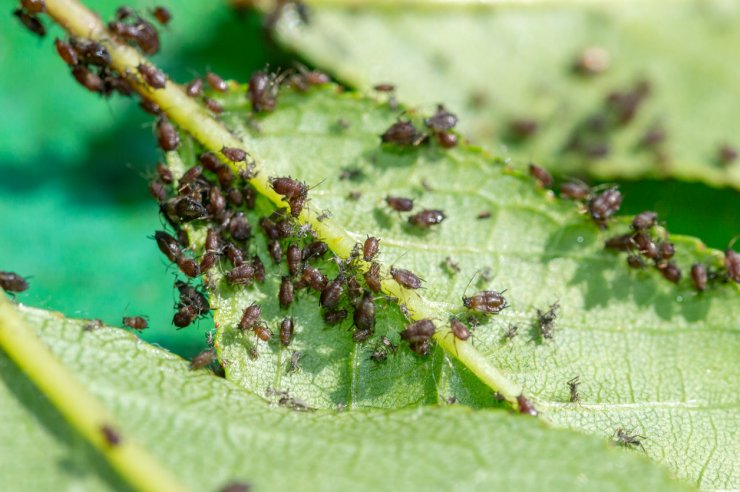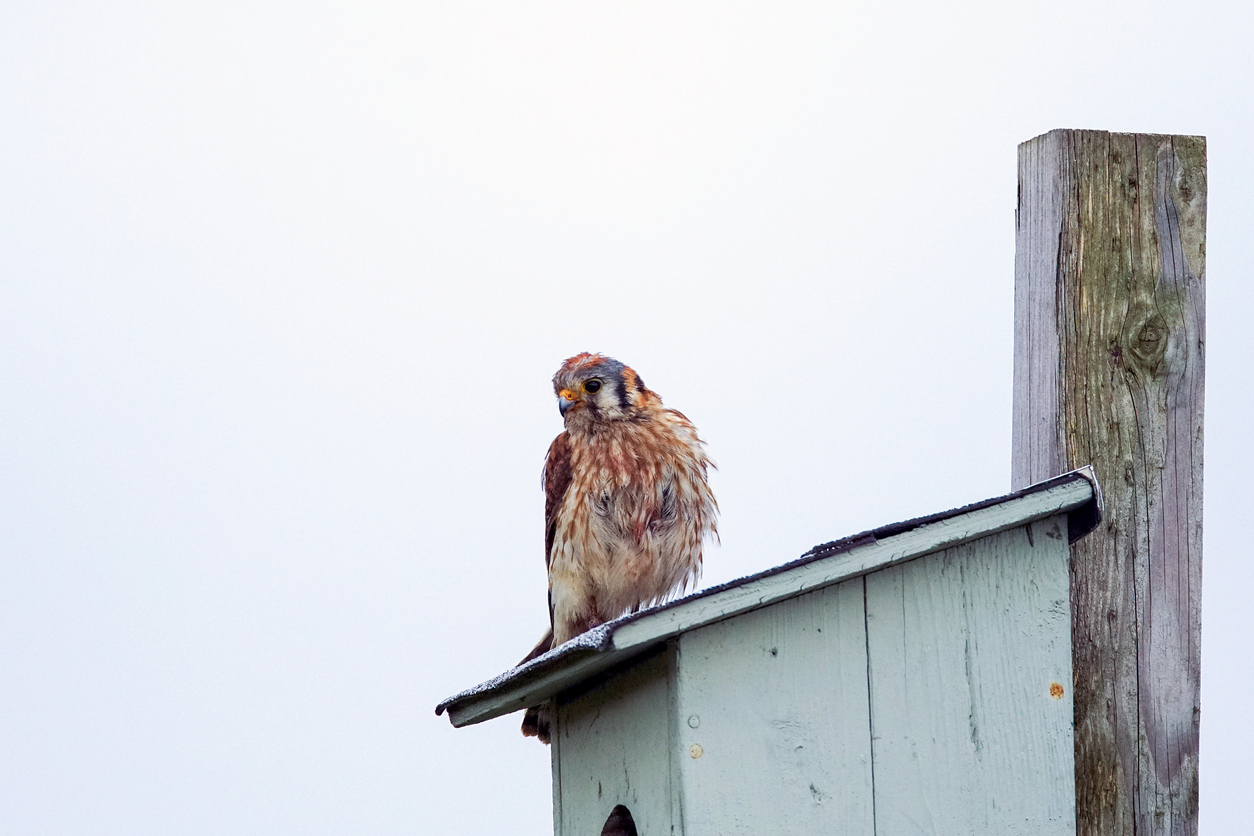
Aphids on cherry tree leaves
You may find aphids, caterpillars, Japanese beetles, thrips, leafhoppers, borers, and the cherry fruit fly on your cherry trees.
Here’s what to look for to spot damage from these pests.
On Leaves and Branches
| Symptoms | Pest |
| Yellowing leaves; clusters of “honeydew” or small “bumps” on underside of leaves; curled leaves | Aphids |
| Thick, gummy sap leaking from round holes on the tree trunk; damaged, sunken areas at graft site | Borer |
| Cream-colored grubs feeding on roots; metallic green beetles skeletonizing leaves | Japanese beetles |
| Slowed growth; new leaves are whitish or mottled; leaf tips wither and die | Leafhoppers |
| Leaves appear bronze; webbing on underside of leaves | Mites |
| Whitish coating on underside of leaves or on branches; sometimes looks like blisters | Scale |
| Large areas of tree encased by webbing; heavy leaf damage | Tent caterpillars |
On Fruit
| Symptoms | Pest |
| Yellowing leaves; clusters of “honeydew” or small “bumps” on underside of leaves; curled leaves | Aphids |
| Small, pinpoint sting marks on the surface of the fruit; larvae in fruit | Cherry fruit fly |
| Pinkish-white larvae with a red-brown head in fruit at stem end | Moths |
| Whitish coating on fruit; sometimes looks like blisters | Scale |
| Stunted fruit growth; sunken areas of fruit | Tarnished plant bug |
| Deformed fruit | Thrips |
How to Treat Pests on Cherry Trees
Here are some proven ways to get rid of pests on your cherry trees. Choose the best treatment for the type of pests invading your trees.
- Pick off the pests. Use your garden gloves to remove the pests by hand. After removal, destroy pests by drowning them in a bucket of soapy water or crushing them with your foot. Handpicking isn’t efficient or practical for very small pests but works well with larger pests.
- Cover up. If birds are making a meal of your cherry trees, you might want to drape some bird netting over the bushes. They’ll still get all the light they need, and you can deter your fine feathered friends. Perhaps there’s a suet cake or seed feeder you can use to lure them away from your garden? Some gardeners swear by grape Kool-Aid®—unsweetened —and mixed with water. Spray it on your cherry trees as they begin to mature; birds reportedly do not like the taste.
- Remove overripe or deformed fruit. If you notice any deformed fruit or fruit that looks like it’s rotting on the bush, remove it as soon as possible. Rotting fruit can attract pests that further damage your bush or cause disease.
- Apply insecticidal soap. Insecticidal soap is organic. The potassium salts in insecticidal soap help remove an insect’s protective waxes, causing destruction of insect membranes and killing them. Mix the soap with water to create your solution, and apply directly to insects on any plants. While insecticidal soap is less apt to affect other organisms, certain plants might be sensitive to the soap and can suffer leaf burn.
- Apply horticultural oils. Combine plant- or petroleum-based oils with water to produce horticultural sprays. Neem oil, for instance, is derived from seed extracts of the neem plant. Oil-based sprays block an insect’s air holes, interfere with an insect’s metabolism, disrupt insect feeding, and inhibit insect growth. Like insecticidal soaps, horticultural oils can cause plant injury if not properly diluted.
- Make your own pest spray. You can make your own pest spray with benign materials. Mix one tablespoon of baking soda, 1/2 teaspoon of a mild dish detergent, and 2 1/2 tablespoons of olive oil in a gallon of water to make a solution that will repel all kinds of bugs, as well as a fungicide for mildew on the cherry tree leaves. Shake it well in your bottle before spraying and repeat every week for it to be continuously effective.
If your tree is infested, act quickly. If you discover that your cherry tree is infested and you’ve tried all natural or store-bought pest solutions and still can’t control it, you may need to cut off and destroy any infected plant material. And remember not to compost it! You don’t want to create a home for future infestations.
A Word About Birds

Birds can be bad for your cherry trees.
Birds will be a major issue with your cherry tree—as in dining on your growing cherries morning, noon, and night! The traditional way to combat birds is to drape bird netting over your trees.
However, you should be ready for the inevitable: Birds and squirrels will get caught in the netting and die. No one really relishes retrieving dead wildlife from their trees.
Therefore, consider some of these alternatives if you prefer:
- Tie reflective tape to branches to distract and disorient birds.
- Use a dummy owl or hawk and move its location daily.
- Eliminate insects on the branches to deter birds.
- Install a birdhouse to attract the predatory kestrel.
- Plant wildflowers like echinacea and rudbeckia to give birds an easier meal.
No single method works better than the others, so you should probably try swapping preventive measures or using more than one at a time to keep the birds from your cherries.
If you do decide to use bird netting, only install it just before fruit begins to appear on your trees. Otherwise, the birds have time to learn how to get inside anyway.
Do pests attack your cherry trees every year? How do you handle removing them—and even preventing them in the first place? Please tell us how you treat your cherry trees to avoid pests.


 Previous
Previous

